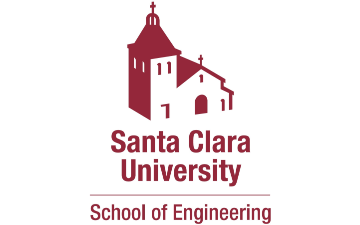
Irina Raicu, director of the Internet Ethics program (@IEthics) at the Markkula Center for Applied Ethics, in conversation with Professor Navid Shaghaghi.
Since 2017, Navid Shaghaghi has taught several dozen sections of CSCI 10—the “Introduction to Computer Science” course offered by Santa Clara University’s department of Mathematics and Computer Science. Among his various other roles at the university, as part of which he oversees a wide variety of research projects, Shaghaghi also leads the Ethical, Pragmatic, and Intelligent Computing (EPIC) Lab. And, as the name of the lab attests, his areas of research include ethics in CS.
At SCU, the introductory computer science course also satisfies the STS (Science, Technology, and Society) requirement for graduation. Given that focus, and his own interest (which led him to pursue an undergraduate degree in Philosophy, as well) Shaghaghi has long included a variety of ethics-related activities as part of the course.
Perhaps the one that he is best-known for, especially among the CS students, is the use of movies to spark conversations about ethical issues. Every quarter, his students are required to watch—and then be prepared to discuss—approximately 15 movie clips or full movies (sometimes multiple ones per week). As Shaghaghi describes it, each of the movies serves as a part of a technology ethics puzzle that develops over the length of the course.
Shaghaghi’s course is comprised of weekly modules that introduce computer science concepts and skills as well as required reading and viewing materials about a variety of ethical issues. Friday sessions are dedicated to in-class discussions that bring them together. A clip from Chaplin’s Modern Times might draw attention to the topic of automation’s impact on human workers; the documentary The Social Dilemma invites a conversation about the power of social media platforms (and especially of recommendation algorithms) on society; Extinction asks the students to consider what it means to be human; an episode of Star Trek and a segment from Wall-e present different kinds of relationships between humans and machines; etc. Other topics addressed include social inequality, privacy and security, and questions of theology.
Weekly quizzes help Shaghaghi track the students’ progress; a term paper requires them to “tell a story about how [a particular technology] has affected our society”; and a final team project focused on frugal innovation and sustainability requires the students to work together and share perspectives.
In non-pandemic-times, Shaghaghi also takes each section for a visit to the Computer History Museum. While SCU’s location makes this easy, instructors in other parts of the country might consider local sites that would similarly enable them to help students perceive in a different way, outside the classroom, the relationship between what they learn in class and the impact that computer science has on the world around them.
Asked what advice he might have for instructors who are interested in incorporating more coverage of ethics into their CS course, Shaghaghi answers, “Don’t over think it. Just do it.” There is plenty of room for innovation and customization in the teaching of responsible CS.
